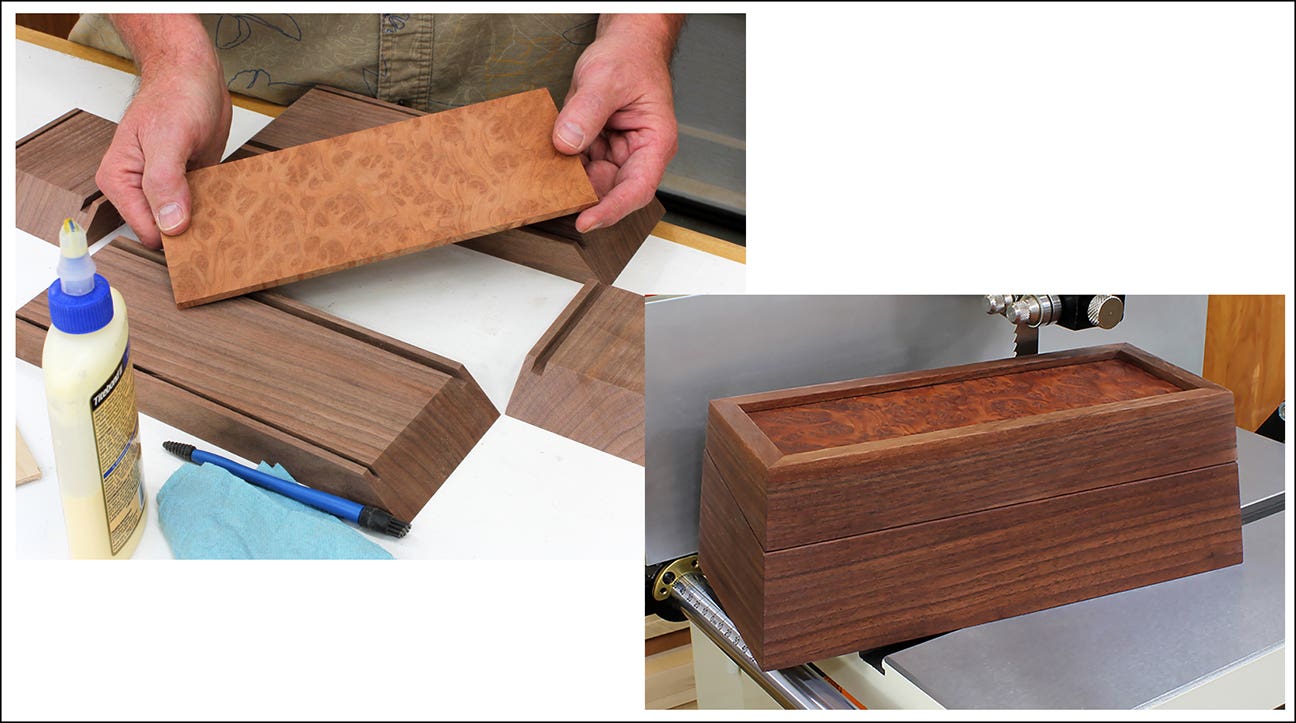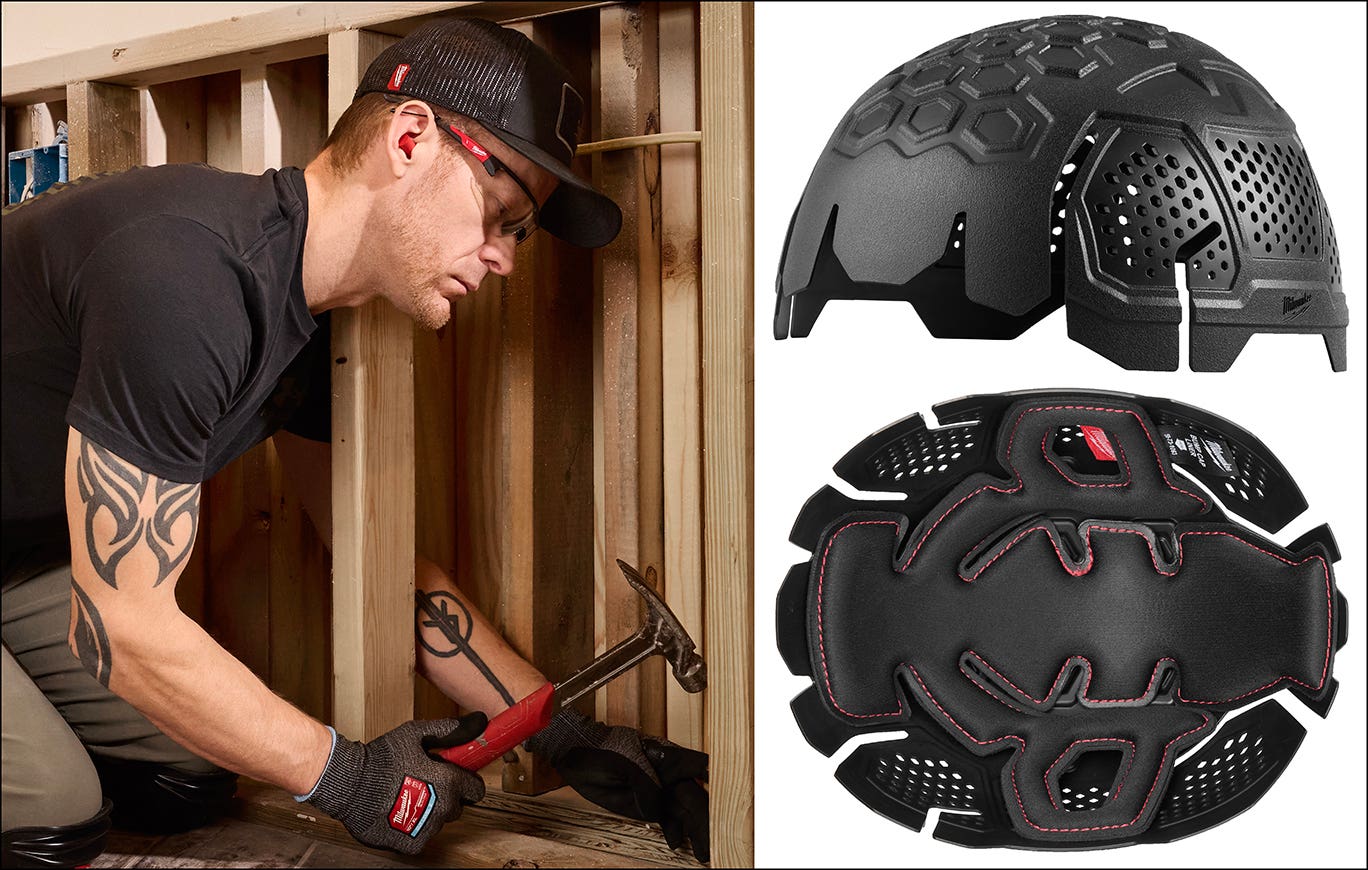Curving projects can be mind-bending
But choosing the proper bending method and appropriate wood species can give your work more value A design that includes curves may seem too difficult and time-consuming to produce without…
But choosing the proper bending method and appropriate wood species can give your work more value
A design that includes curves may seem too difficult and time-consuming to produce without putting the cost of the project out of reach. Choosing the proper method and an appropriate species of wood, however, can make a project containing curves more profitable.
Start by determining if the shape can be easily cut from a solid piece of wood. Waste will be one factor to consider when a curved shape is cut from a straight piece of wood. Next, look at the structure of the wood. In most woods, the fibers are running in one direction, so when a curved shape is cut from a board there may be a weak spot where the grain is short. Short grain is where the grain of the wood travels across the width of a curved piece of wood instead of following the curve. Consider the finish and where the piece is to be used. If the piece is to be painted or stained dark and kept inside, several solid pieces could be joined to create the desired shape.
Consider the labor involved. For bending, it takes a certain amount of time to construct the molds and jigs. Finally, no matter how wood is bent, there is a tendency for the curve to relax a little over time, which is known as “springback”. Springback can be compensated for by calculating, through trial-and-error, how much a particular species of wood bent at a particular radius might spring back. The ends of the curve can also be secured as in the case of a chair back that fastens to the seat.
After considering all of the above, I often decide on bending because of the freedom of design it allows, and the added strength and the efficiency gained by bending multiple pieces.
The options
Bending can be grouped into several basic categories including: bending “green” or bending wood that was recently alive and hasn’t dried; soaking in warm water; adding more heat, which can relax the wood fibers; steam and heat, which forces moisture deep into the wood, allowing the wood to bend easier; and bent lamination, which takes several layers of thin wood — cut thin enough to bend on their own or with the added moisture from the adhesive — and gluing them together in a curved form. Wide-panel bent laminations can be created by stacking and gluing thin plywood in the same way.
Choosing the right bending method for a particular project usually depends on several factors, including the species of wood and the way it was dried. Consider the bending properties of the species of wood that you plan to use and determine if it will bend to the radius you want in the desired thickness. Some species of woods, such as white oak and ash, bend easier than others.
Determine how the wood was dried. Green woods are difficult to find and, in most cases, they tend to distort as they dry. Green wood also has much more of a tendency to spring back to its original shape than wood that is first dried and then remoistened. However, green woods, particularly willow, are an excellent choice for wicker furniture and baskets.
Air-dried woods will bend more easily than kiln-dried woods because the kiln drying process tends to break down a compound in the cell walls known as lignin. Lignin acts like a flexible glue when moistened and heated, by allowing the cells to stretch and compress without tearing. Lignin will harden as it dries and cools, helping a curve to hold its shape.
Two key ingredients
For almost any species of wood, you will need to increase the amount of moisture and heat as the pieces set to be bent become thicker and the radii smaller. For projects such as a guitar body that are made of one layer of thin wood bent to a relatively large radius, you may be able to use a heat source such as a bending iron with just a small amount of moisture. Slightly thicker woods can be soaked in hot water and then bent around a form by hand. This process works well for constructing a Shaker box. Thicker woods may need to be steamed for a period of time at a temperature of more than 200 degrees, and then backed with a metal strap to help them bend without splitting.
As wood is bending, the fibers on the outside of the radius stretch and the fibers on the inside of the curve are compressed together. Wood fibers compress much more easily than they stretch, which is why the most common failure when bending wood is splitting on the outside of the curve. This problem can often be solved by placing a metal compression strap on the outside of the curve to hold the fibers down. The strap also has blocks on the ends that apply pressure inward to prevent the grain on the outside of the radius from pulling apart. A good smooth solid form for the inside of the curve will prevent the inner fibers from cracking or folding.
Bent lamination
If you don’t want to go to the trouble of steam bending or if your species of wood doesn’t respond well to bending, the wood can be cut into strips thin enough to bend and then glued together in a form. But the glue lines will be visible on the edge of the curve, particularly with a light-colored wood. If you are using a dark-colored wood and cut the laminations from the same board, then glue them back together in sequential order with a dark-colored glue, and you may be able to hide the glue lines altogether.
You will need to budget some time for cleaning up the dried glue on the edges. Consider the budget as well when cutting laminates from solid wood, because you can expect at least 50 percent waste from sawing and planing. There may be more labor involved with bent lamination than with steam bending. However, if you are doing multiples, it may be much quicker to make a steam box for bending the pieces.
Strength is another consideration. A laminated curve can be much stronger than the same shape cut from one piece of solid stock because there is so much glue surface between the layers. Steam-bent wood will spring back more than laminated wood glued with an adhesive that dries very hard.
No matter which process you select, the way wood was cut and the presence of defects is a primary concern. Wood will bend easiest along the grain. If the grain starts to cut across the width of the curve, it will tend to split where the grain ends, or runs out on the outside of the curve. To prevent splitting, select a piece of wood that has the grain running parallel to the surface. The wood will also crack around any knots, checks or defects.
More information about wood bending can found in Jonathan Benson’s new book, “Woodworker’s Guide to Bending Wood”, published by Fox Chapel Publishing.
This article originally appeared in the June 2009 issue.







